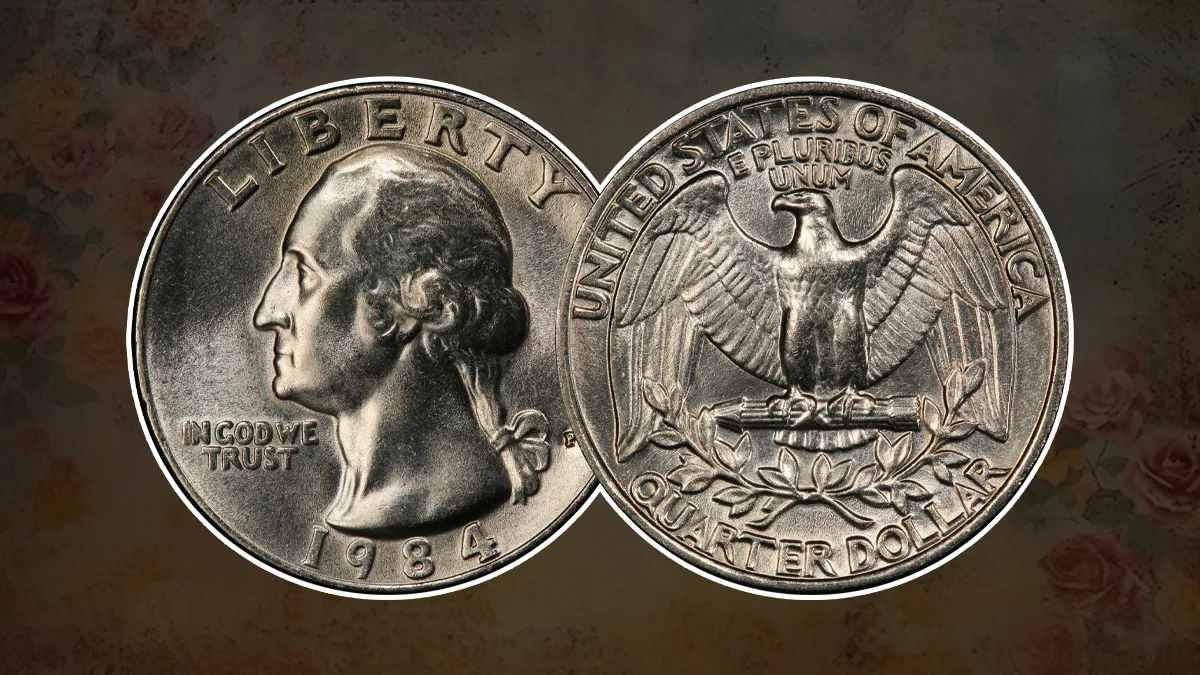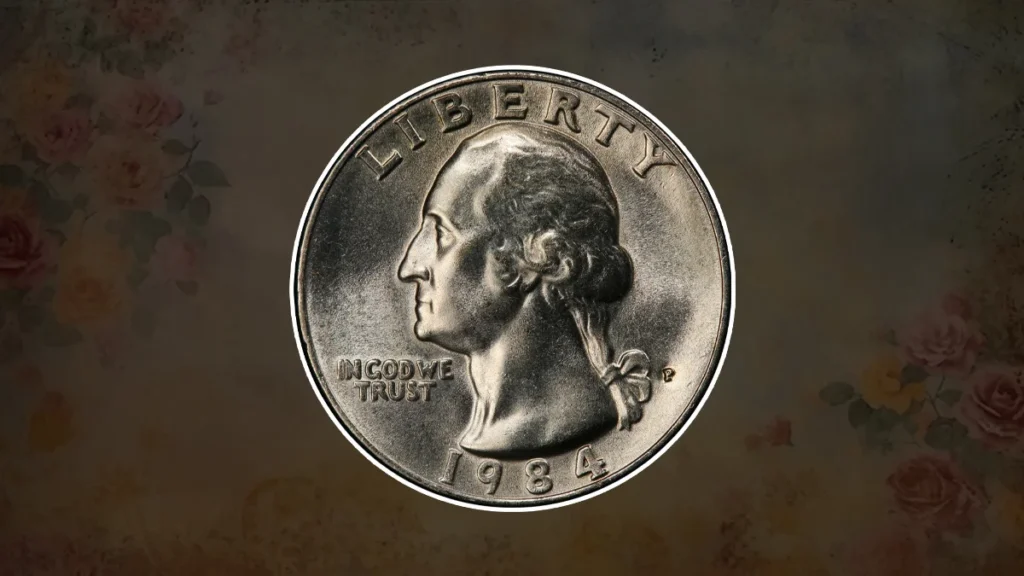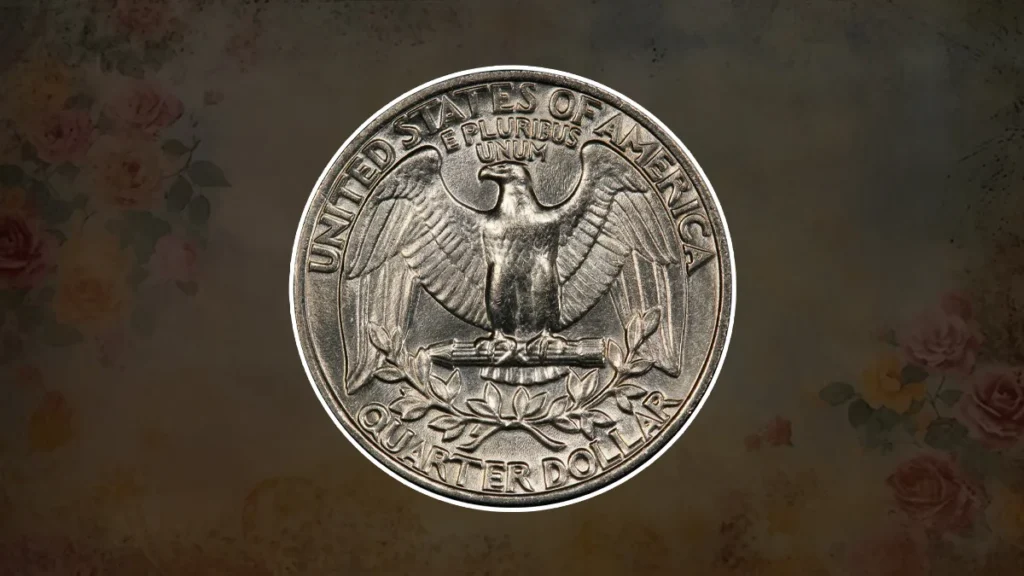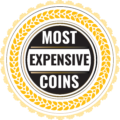
The 1984 Washington Quarter is a modern coin. It provides historical value and collector interest. Though it may appear like just another circulating quarter, this coin can be worth more than face value depending on factors like its condition, mint mark, and the fact of errors. For collectors, understanding the value of the 1984 Washington Quarter and its different features is essential to determining its value. It stands out among the Most Valuable Modern Quarters, making it a must-know for coin enthusiasts. In this article, we will discuss everything you need to learn, from its history to grading information, so that you can better assess your 1984 quarter’s value.
Since 1932, Washington quarters have been an essential part of American currency, and they continue to be in high demand today. Collectors regularly check out the 1984 Washington Quarter because of its unique design, historical value, and uncommon minting errors, even though it was not made of silver like the earlier ones. With high mintages at multiple sites, many of these coins hold modest value, but rare coins in excellent condition can be worth significant amounts.
This article will take a deep dive into the history, design, grading, and value of the 1984 Washington Quarter, allowing you to determine whether your quarter is worth holding onto—or even selling for earnings.
History of the 1984 Washington Quarter
Commemorating George Washington’s 200th birthday, Congress established a Bicentennial Committee in 1924, marking the beginning of plans to include Washington’s image on American currency. The original plan was to mark the occasion in 1932 with the minting of a Washington silver dollar. Ultimately, though, Congress decided to build a Washington-themed design instead of the Standing Liberty Quarter.
For the purpose of trying to choose an artist for the new coin, the Fine Arts Commission and Bicentennial Committee held a design competition, from which Laura Gardin Fraser’s entry was eventually selected. The decision was overturned by U.S. Treasury Secretary Andrew Mellon, who then called for another competition that produced John Flanagan’s now-famous design, which was based on a bust of George Washington carved by Jean-Antoine Houdon.
The first Washington Quarters were produced in 1932. It is made mostly of 90% silver. In 1965, due to rising silver prices, the U.S. Mint switched the composition to a copper-nickel clad over a copper core, and this composition continues to be used in quarters, including the 1984 Washington Quarter. By 1984, quarters were made in three mint locations: Philadelphia, Denver, and San Francisco. If you’re curious about the value of a specific coin, especially one from this era, a Coin Value Checker can be a helpful tool in determining its worth.
Specifications of the 1984 Washington Quarter
- Composition: Cupronickel (75% copper, 25% nickel) outer layer with a pure copper core
- Weight: 5.67 grams
- Diameter: 24.30 mm
- Edge: Reeded
- Mints: Philadelphia (P), Denver (D), San Francisco (S – Proof)
Design of the 1984 Washington Quarter
Obverse (Front)

The obverse side of the 1984 Washington Quarter has the iconic left-facing portrait of George Washington. It is designed by John Flanagan. Washington is represented with a composed expression and a slight smile, his hair tied back in a low ponytail.
- LIBERTY is written along the top edge, in bold capital letters.
- IN GOD WE TRUST, the national motto, is written to the left of Washington’s neck.
- The date 1984 is prominently shown at the bottom side of the coin.
- A small mint mark can be located near the ponytail, with “P” for Philadelphia, “D” for Denver, or “S” for San Francisco (Proof coins).
- Flanagan’s initials, “JF,” are subtly written along Washington’s neckline, just above the “4” in the date.
Reverse (Back)

The reverse side of the 1984 Washington Quarter has a majestic left-facing eagle with outstretched wings. The eagle holds a bundle of arrows in its talons, representing strength and enthusiasm for defense. Below the eagle, two olive branches, bound together, represent peace.
- UNITED STATES OF AMERICA is turned along the upper edge.
- The motto E PLURIBUS UNUM (“Out of Many, One”) is written under the eagle’s beak.
- The denomination QUARTER DOLLAR seems at the bottom of the coin, surrounding the olive branches.
1984 Quarter Varieties
There are three major types of the 1984 Washington Quarter, differentiated by their mint marks:
- 1984-P (Philadelphia): No mint mark
- 1984-D (Denver): Marked with a “D”
- 1984-S (San Francisco): Proof coin, marked with an “S”
1984 Washington Quarter Value and Grading
The 1984 Washington Quarter holds most of its value in uncirculated or gem-quality condition. Circulated examples are common and normally worth their face value. However, rare high-grade mint state examples, mainly those with grading levels of MS67 or higher, can command important premiums.
| Mint Mark | Good | Fine | Extremely Fine | Uncirculated |
| 1984-P | $0.30 | $0.30 | $0.30 | $550 |
| 1984-D | $0.30 | $0.30 | $0.30 | $550 |
| 1984-S | Proof | – | – | $90 |
- 1984-P: Worth between $0.30 and $0.85 in circulated condition. Superb MS67 examples have sold for as much as $1,293.
- 1984–D: The value of circulated coins varies between $0.30 to $0.85. Examples of MS67 may fetch up to $780.
- Proof 1984-S: These proof coins are common yet valuable; they are not designed for use in circulation. They may bring up to $90 in PF70 condition.
Rare 1984 Quarter Errors
Varieties and errors may increase the value of the 1984 Washington Quarter. Here are a few of the most notable errors:
- Overstruck Date (1984-P): Often caused by grease-filled dies, this error makes the number “4” appear coated. The highest possible value of these coins is $250.
- Letters Missing (1984–P): Several coins miss letters which make up the motto “IN GOD WE TRUST.” Errors in letters that are missing might bring in $300 to $500.
- Off-Center Strike (1984-P): Such errors result from an off-center design caused by a misaligned planchet. These could fetch $200–$245 at sale.
- Spitting Eagle (1984-D): A die crack error provides the impression that an eagle has spit because it looks as though a line is coming out of its beak. The current value for these coins is about $50.
Related Post –
- 1983 Washington Quarter: A Complete Guide
- 1982 Washington Quarter: A Complete Guide
- 1981 Washington Modern Quarter: A Comprehensive Guide
- 1971 Washington Quarter: A Complete Guide
Conclusion
Although common, the 1984 Washington Quarter is a unique coin with excellent value in uncirculated or error variations. The history and unique design of these coins are highly demanded by collectors, and errors can increase the value of even contemporary quarters. Whatever your level of experience with numismatics, knowing the specifics of the 1984 quarter can help you determine its value and importance.
